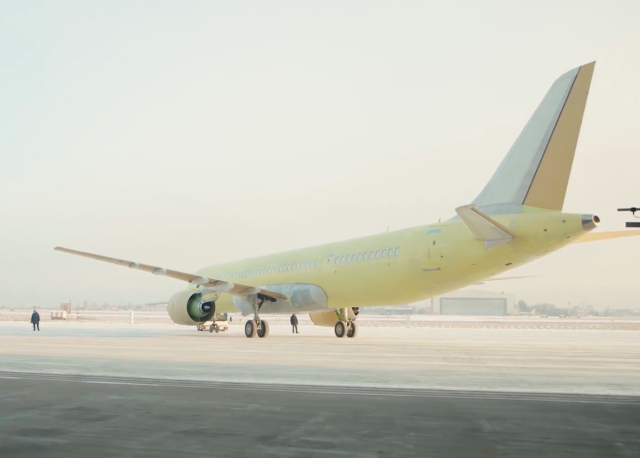Yakutsk. January 24. INTERFAX - FAR EAST - The MS-21-300 civil aircraft arrived in Yakutsk from the city of Zhukovsky, Moscow region, where it will be tested in low temperatures, the press service of the government of Yakutia reports.
"Tests will be conducted to expand the possibility of operating the aircraft at an outdoor temperature below minus 30 degrees. This is a continuation of the hard work that ended last year with the receipt of a type certificate for the MS-21-300," Andrei Boginsky, CEO of Irkut Corporation, is quoted in the message.
It is specified that the tests are carried out to extend the type certificate. Earlier, the aircraft systems were successfully tested on stands in temperature conditions up to minus 55 degrees.
A group of 70 specialists from Irkut Corporation (MOEX: IRKT) (part of Rostec UAC) and the Yakovlev Experimental Design Bureau flew to Yakutsk to test the aircraft. They will work in the capital of the republic for three weeks.
"Ground and flight tests in Yakutia will take place approximately within three weeks, depending on the air temperature in the region. Each stage of the tests is preceded by the cooling of the aircraft - in the evening and at night it will be in an open parking lot for 12 hours," the press service of the Managing director of the Yakovlev Design Bureau Daniil Brenerman quotes.
According to the Minister of Transport and Road Management of Yakutia, Vladimir Sivtsev, in the future, the MS-21-300 aircraft is planned to be purchased within the framework of a single Far Eastern company, including for passenger flights to the republic.
MS-21 is a family of medium-haul passenger aircraft created by Rostec enterprises. Certification and the launch of serial production of the basic modification of the MS-21-300 for 163-211 seats were repeatedly postponed. One of the reasons was the US sanctions against Aerocomposite (part of Rostec), due to which the supply of composite materials for the MS-21 wing was banned. At the end of December 2021, the MS-21 received a basic type certificate.
Domestic materials for the wing were developed by Rosatom enterprises with the participation of MSU scientists. Wing consoles and center section are manufactured at Aerocomposite-Ulyanovsk. The share of composites in the MS-21 design, according to Rostec, is about 40%.

